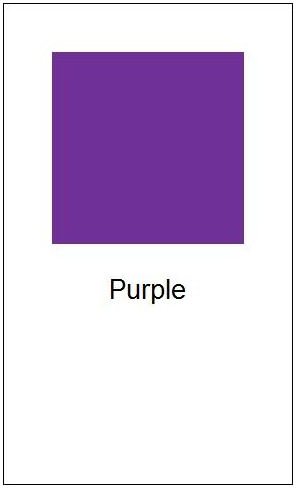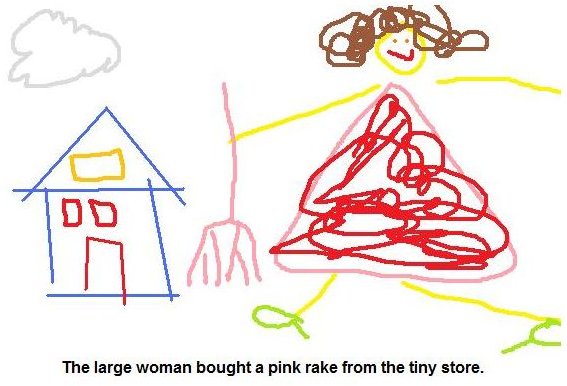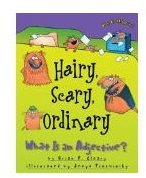Adjective Lesson Plan for Preschoolers: Teaching About Describing Words
Prior Knowledge About Adjectives
Preschoolers use words to describe people, places, things, ideas, and activities every day. Although explicit language and grammar
instruction typically begins after preschool in elementary school, preschool aged students can begin to learn about the most basic parts of speech, or grammatical forms, including nouns, adjectives, and verbs. This lesson plan outlines activities to teach preschool children that adjectives are words that describe nouns.
The teacher can introduce the topic of adjectives to the preschool class by asking the students the following questions:
- Do you know what an adjective is?
- Do you know what it means to describe something?
Most preschoolers will probably answer no to the first question but should be able to answer the second question. For example, the students might say that describing something means telling about it. The students must have prior knowledge about the concept of description before continuing with the rest of the adjective lesson plan. If the students cannot answer question two, then the teacher should review how to describe something.
Reading
After the discussion introducing preschoolers to adjectives, the teacher can read one or two books about adjectives to the students. Two

excellent titles, both by Brian P. Cleary, for younger students are:
- Hairy, Scary, Ordinary: What Is an Adjective?
- Quirky, Jerky, Extra Perky: More about Adjectives
Both books talk about adjectives as words that describe things, ideas, and living beings, or, in other words, nouns. The preschoolers will love the fun rhymes that are chock-full of silly adjectives such as “Adjectives are words like hairy, scary, cool, and ordinary.” and “They give us lots of great description, like tall, left-handed, young Egyptian.” The illustrations of silly cats with squeaky dogs and hot pink shades with help the preschool aged children learn about adjectives by associating words with pictures.
Adjective Sorting Activity
The Adjective Sorting Activity, or “What Kind of Adjective Is It” activity, helps preschoolers learn to categorize similar adjectives into categories. The students will learn to sort known adjectives into three categories. The materials needed for this preschool activity are:
- Adjective photo flashcards
- Three baskets

The adjective flashcards should have both pictures and written words of preschool level vocabulary words. Some printable sample flashcards that contain vocabulary words for colors, sizes, and feelings are available for download by clicking Preschool Adjective Flashcards: Colors, Sizes, and Feelings. The teacher should also label each of the three baskets. For example, in the case of the sample adjective flashcards, label the baskets as color, size, and feeling.
To play the Adjective Sorting game, the teacher should first place the three baskets on a table at the front of the classroom and read the labels aloud to the students. The teacher will then randomly choose cards from the deck of adjective flashcards and ask the students to identify the type of adjective. For example, in the case of the sample cards, the teacher would ask, “Is it a color, size, or feeling.” If the teacher chose the happy card, then the question would be, “Is happy a color, size, or feeling?” The preschoolers would then answer, “Happy is a feeling.” After the students correctly identify the type of adjective on the flashcard, the teacher will place the card in the corresponding basket.
Silly Sentences Activity

The Silly Sentences activity is another fun adjective activity that will help preschool aged students use adjectives to describe people, places, things, and other nouns. The children will learn to think up appropriate (or not so appropriate) adjectives to insert into sentences. The materials needed fro this preschool activity are:
- Chalkboard or dry erase board
- Chalk or dry erase markers
To play the Silly Sentences activity, the teacher should first write a sentence on the board and include blanks in front of the nouns. Some sample sentences are:
- The _____ man ate the _____ apple in the _____ kitchen.
- A _____ car crashed into the _____ tree on a _____ morning.
- My _____ dog _____ stole a _____ toy from my _____ brother.
The teacher will then call on individual students to provide adjectives to fill in the blanks to create silly sentences. Preschoolers will love making and hearing silly sentences like “The purple man ate the yucky apple in the boring kitchen” and “My crazy dog stole a giant toy from my bad brother.” Optional: The teacher can write the silly sentences the class comes up with on blank sheets of paper and have the preschool students draw pictures to illustrate the silly sentences.
Assessment
At the end of the adjective lesson, the teacher should review what the preschool students learned by asking the following questions:
- What is an adjective?
- What does it mean to describe something?
- Name some words that describe.
- What types of words are big, purple, and scared?
The preschool aged children should be able to answer all four questions completely after reading the adjective books Hairy, Scary, Ordinary: What Is an Adjective? and Quirky, Jerky, Extra Perky: More about Adjectives by Brian P. Cleary and after playing the Adjective Sorting and Silly Sentences activities. By learning about adjectives as words that describe nouns at an early age in preschool, children will be better prepared for later grammar and language study in elementary school and beyond.
Related Articles
- Lesson Plan: Teaching Nouns and Adjectives – adjective lesson plan for first to twelfth grade
- Lesson Plan: How to Teach ESL Students the Difference between Adjectives and Determiners – adjective lesson plan for older English language learners
- The Functions of Adjectives and Adjective Phrases in English – adjective resource for teachers
This post is part of the series: Teaching Grammar: Preschool Lesson Plans
Preschoolers can develop a strong foundation for future grammar study by learning the basics about the parts of speech. This series of pre-K lesson plans suggests books, discussion questions, and activities for preparing students for later grammar education.
